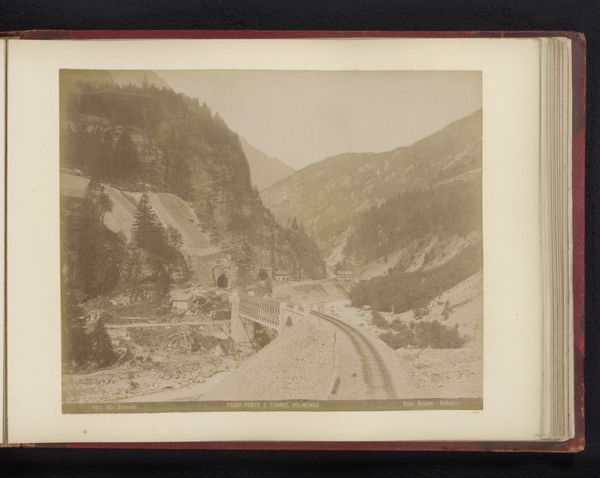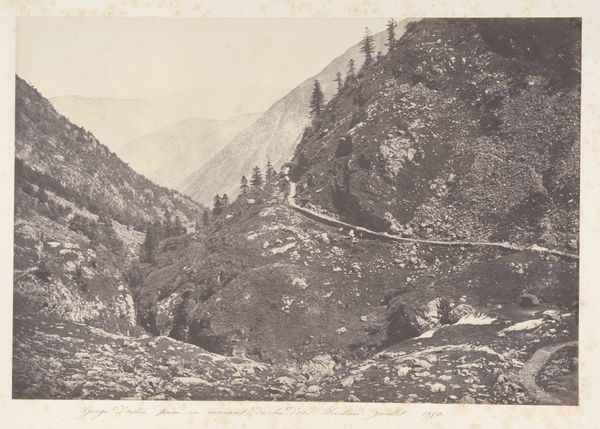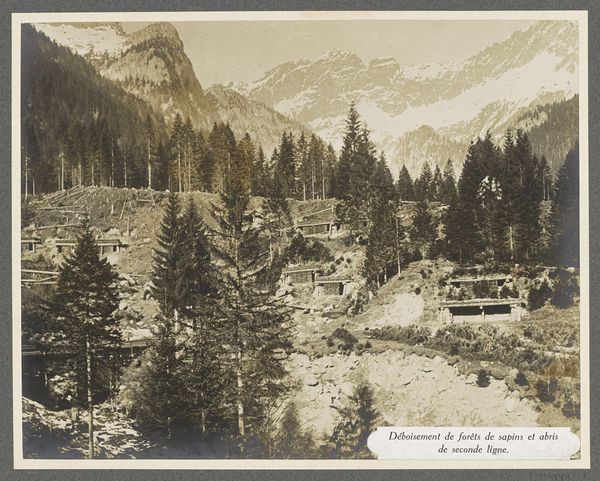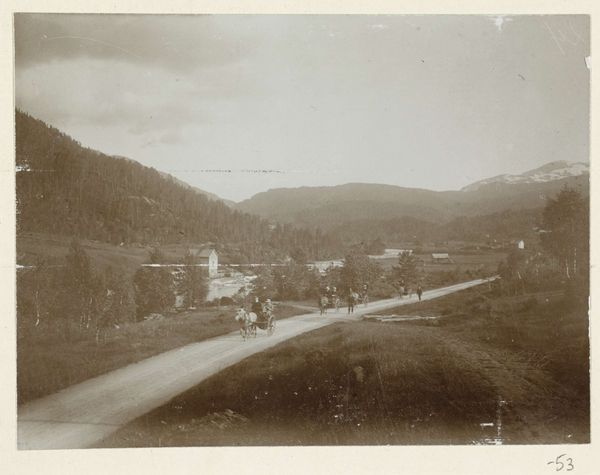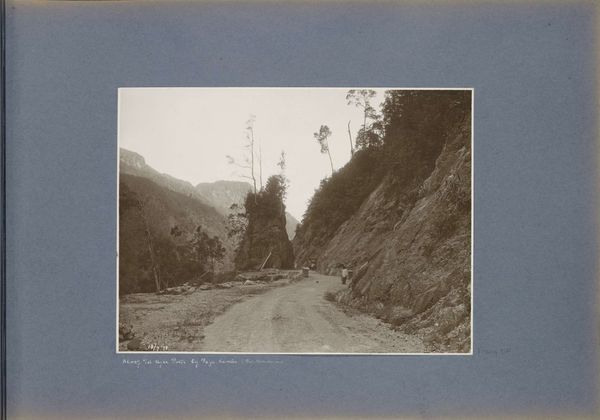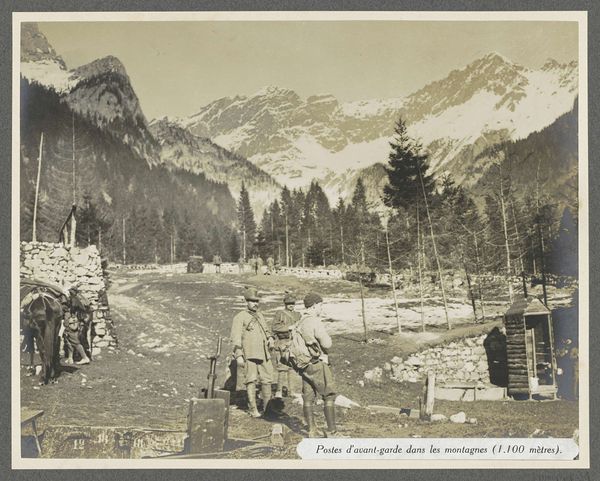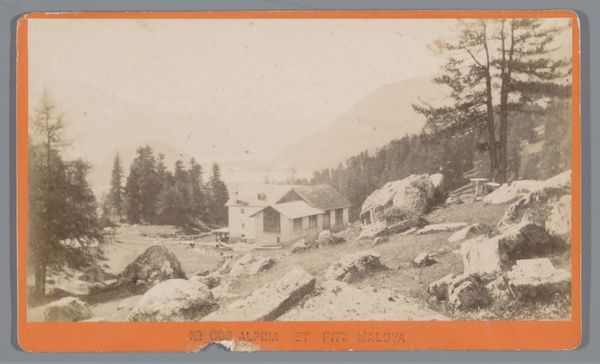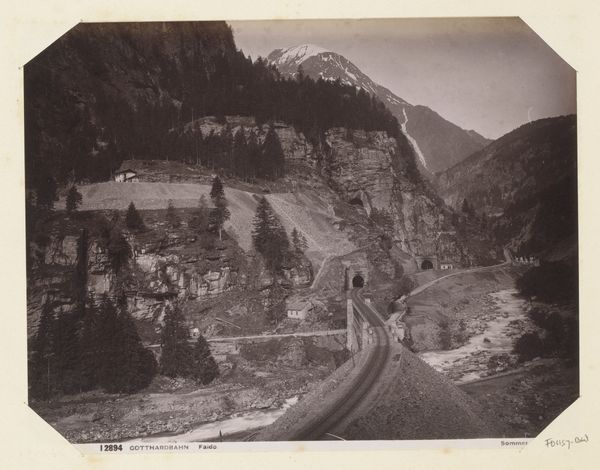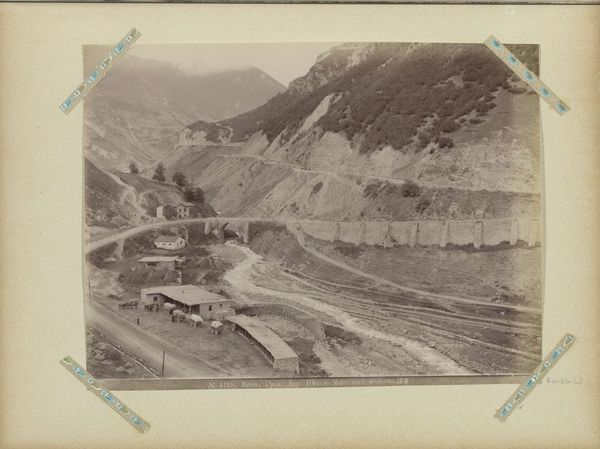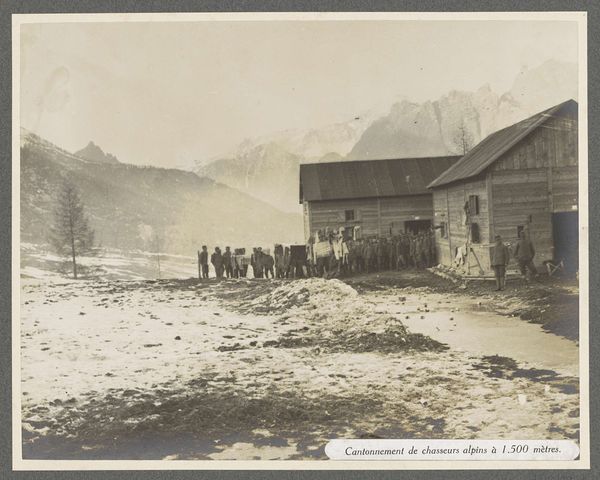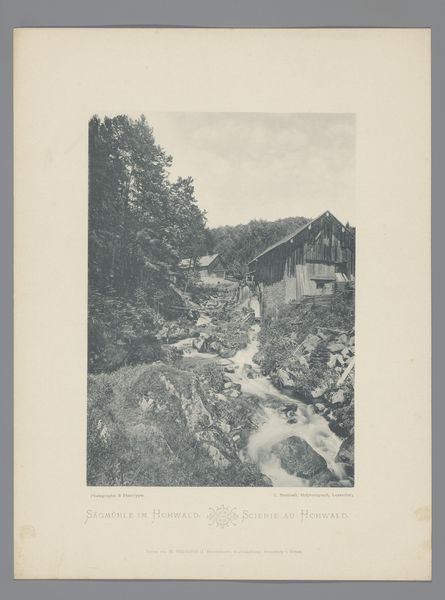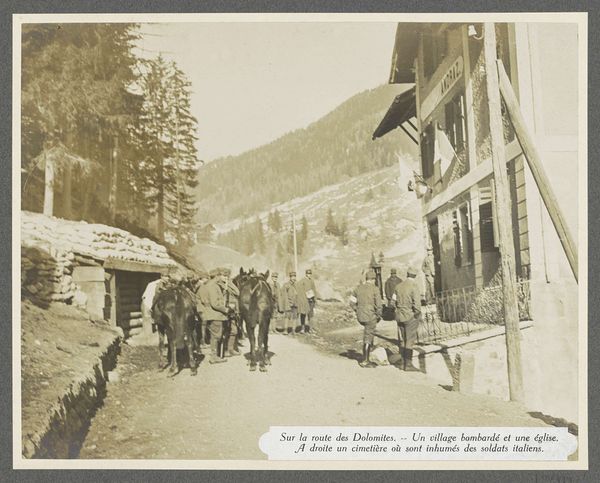
plein-air, photography
#
plein-air
#
landscape
#
archive photography
#
photography
#
historical photography
#
desaturated colour
#
mountain
#
realism
Dimensions: height 220 mm, width 280 mm
Copyright: Rijks Museum: Open Domain
Curator: Looking at this desaturated photograph titled "Ontboste berghelling met een rokende schuilplaats in de Dolomieten" by Henri de Rothschild, dated 1916, I feel a profound sense of disquiet. The starkness and exposure almost erase the scene. What strikes you first? Editor: The smoke, undeniably. It feels less like nature, more like industrialization, and speaks volumes about human impact on this landscape. I wonder if this photograph might be a commentary on deforestation, a politically charged theme given the historical context. Curator: That's astute. Smoke often carries layered symbolic weight—evocation of the ephemeral, transformation, sacrifice, but also the immediate trace of a present activity. The visual weight, especially contrasted against the mountain, emphasizes the scene’s artificial alteration. Editor: Precisely. The deforested slope is an unmistakable act of intervention. This was taken during World War I, a time when resources were ruthlessly exploited, with landscapes often considered strategic assets rather than sacred spaces. I see it as indictment of this era’s disregard. Curator: An important observation. Furthermore, look closely at how the photograph directs our gaze: from the relatively intact forest on one side to the bare slope. There is the implicit contrast between preservation and exploitation. Note the shelter—implying a person who witnesses or caused this event. Editor: And it prompts crucial questions about labor, land ownership, and the social hierarchies involved. The ‘rokende schuilplaats’ feels unsettling, like a hidden truth that demands examination. The lack of people, but a blatant evidence of intervention makes us want to fill in the scene as an activist stance. Curator: This photograph, then, operates almost like a loaded document: a visual testament not just to landscape change, but a commentary on resource exploitation during wartime and possibly Rothschild’s views about this particular landscape. Editor: I agree. By subtly foregrounding the signs of industrial encroachment, Rothschild transforms what could have been a simple plein-air study into a powerful statement about environmental and social responsibility. Curator: Yes. There is always so much to unravel and see when symbols of change appear and how it affects cultural memory, and a sense of what a photograph should capture! Editor: Absolutely. These dialogues—between the visible and invisible, the personal and the political— are essential to understanding a photograph’s enduring significance, not merely as historical record, but as a mirror reflecting back our own ethical dilemmas.
Comments
No comments
Be the first to comment and join the conversation on the ultimate creative platform.
